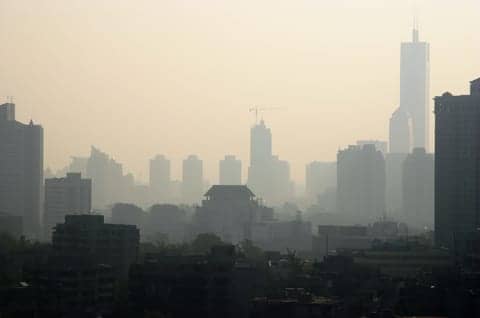One-in-three Americans lives in the “sneeziest and wheeziest” cities and regions where they are exposed to both ragweed pollen and ozone smog pollution that can worsen respiratory allergies and asthma, according to a report from the Natural Resources Defense Council (NRDC). The NRDC is an international, nonprofit, environmental organization focused on environmental issues.
The report, “Sneezing and Wheezing: How Climate Change Could Increase Ragweed Allergies, Air Pollution and Asthma,” is among the first to map the intersection of ragweed prevalence and high ozone smog, which can magnify respiratory allergies and asthma.
As a consequence, 109 million Americans living in these cities are more likely to suffer itchy eyes, runny noses and sneezing, and may find it hard to breathe, the report says. And they become more ill than those exposed to only ragweed or ozone pollution.
According to the NRDC, the report underscores the dangers of climate change, because as the planet warms, millions more Americans could become ill with potentially severe respiratory allergies and asthma.
“Americans deserve to breathe clean air, but today millions of us are sneezing and wheezing from allergies and asthma worsened by climate change-fueled ragweed pollen and ozone smog pollution,” said Juan Declet-Barreto, the primary author of the NRDC report. “This double-whammy health threat will only intensify, and affect more people, if we don’t take steps to reduce climate change now. For our health and future, the EPA should strengthen the health standard for ozone pollution and set strong limits on power plant carbon pollution.”
NRDC’s report finds that 35 major cities where people are exposed to both ragweed pollen and ozone smog. The most vulnerable regions are the Los Angeles Basin, the St. Louis area, the Great Lakes Region, the Mid-Atlantic and the Northeast, the NRDC report shows.
This is a health problem because warmer temperatures enhance the reactions that form ozone pollution. Ozone exposures irritate the lungs and can lead to lung inflammation, diminished lung function and worsen asthma symptoms.
NRDC’s report identifies the following cities now faced with both ragweed pollen and ozone pollution, and the associated threats to respiratory health:
1. Richmond, VA
2. Memphis, TN
3. Oklahoma City, OK
4. Philadelphia, PA
5. Chattanooga, TN
6. Chicago, IL
7. Detroit, MI
8. New Haven, CT
9. Allentown, PA
10. Atlanta, GA
11. Pittsburgh, PA
12. Louisville, IL
13. Springfield, MA
14. Milwaukee, WI
15. Dayton, OH
16. Cleveland, OH
17. Toledo, OH
18. Little Rock, AR
19. Bridgeport, CT
20. Akron, OH
21. Indianapolis, IN
22. Providence, RI
23. Cincinnati, OH
24. Wichita, KS
25. Harrisburg, PA
26. Nashville, TN
27. Hartford, CT
28. Phoenix, AZ
29. Knoxville, TN
30. Jackson, MS
31. Dallas, TX
32. Los Angeles, CA
33. Youngstown, OH
34. Columbus, OH
35. Orlando, FL
The full report is available here.









